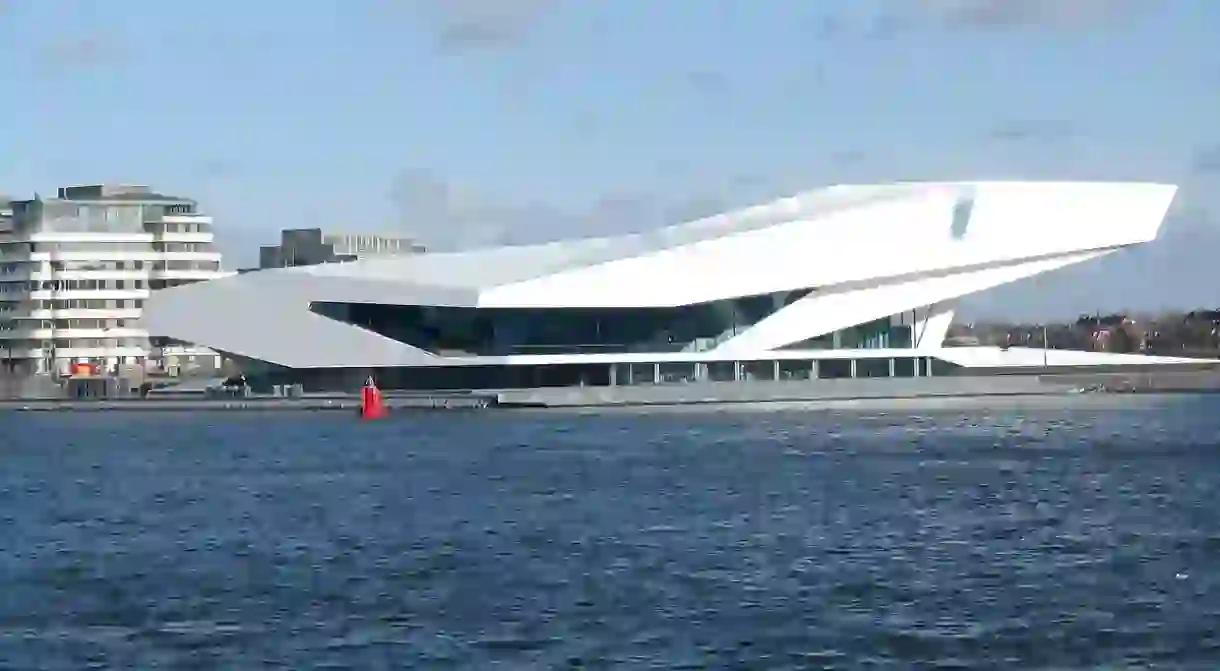A Brief History of the EYE Filmmuseum, Amsterdam

In 2012, Queen Beatrix II opened the EYE Filmmuseum. The completion of this monolithic building immediately altered Amsterdam-Noord’s urban landscape and effectively introduced postmodernism into its architectural vocabulary.
Structurally, The EYE Filmmuseum is a masterpiece. Its exterior appears to change according to an onlooker’s line of sight, and successfully creates the semblance of movement – an illusion that is created by its outer walls’ sloping spires and gradual inclines. These peculiar geometrical motifs are exceptionally effective, and form an outstanding, multi-faceted silhouette comparable to Prague’s Dancing House or Bilbao’s Guggenheim Museum.
The EYE Filmmuseum was designed to satisfy demand for cultural enhancement; before its construction, Amsterdam’s northern shoreline was mainly associated with shipping and industry. These activities shaped the area’s civic appearance and encouraged the development of countless warehouses, factories and plants. The EYE Filmmuseum’s presence significantly modified this winding dockland’s geography and completely reshaped its skyline, producing an unusual urban pastiche that fuses industrial aesthetics with avant-garde architecture. The EYEFilmmuseum building was designed by the Viennese firm Delugan Meissl Associated Architects.

Large parts of the EYE Filmmuseum were constructed for archival purposes, and its lower levels contain a massive collection of cinematographic artifacts. This material dates back to 1895 and includes the earliest examples of Dutch cinema.
There are four modern cinemas enclosed inside of the EYE Filmmuseum’s eastern steeple. These theatres are actually suspended 20m (65.6 ft.) above ground level and hang over the building’s main structure.
As a museum, the EYE Filmmuseum is dedicated to participation, and regularly hosts large exhibitions that focus on a specific aspect of film theory or history. Over the past five years, the EYE Filmmuseum has also held several impressive temporary exhibitions that examine the process behind groundbreaking cinematographers’ work. New Dutch releases generally debut at the EYE Filmmuseum, and the cinema’s programme usually features a mix of mainstream, classic, and arthouse cinema – making it among the best places to watch a film in the Netherlands.
📅 Sunday to Thursday, 10am–10pm, Friday to Saturday, 10am–11pm













